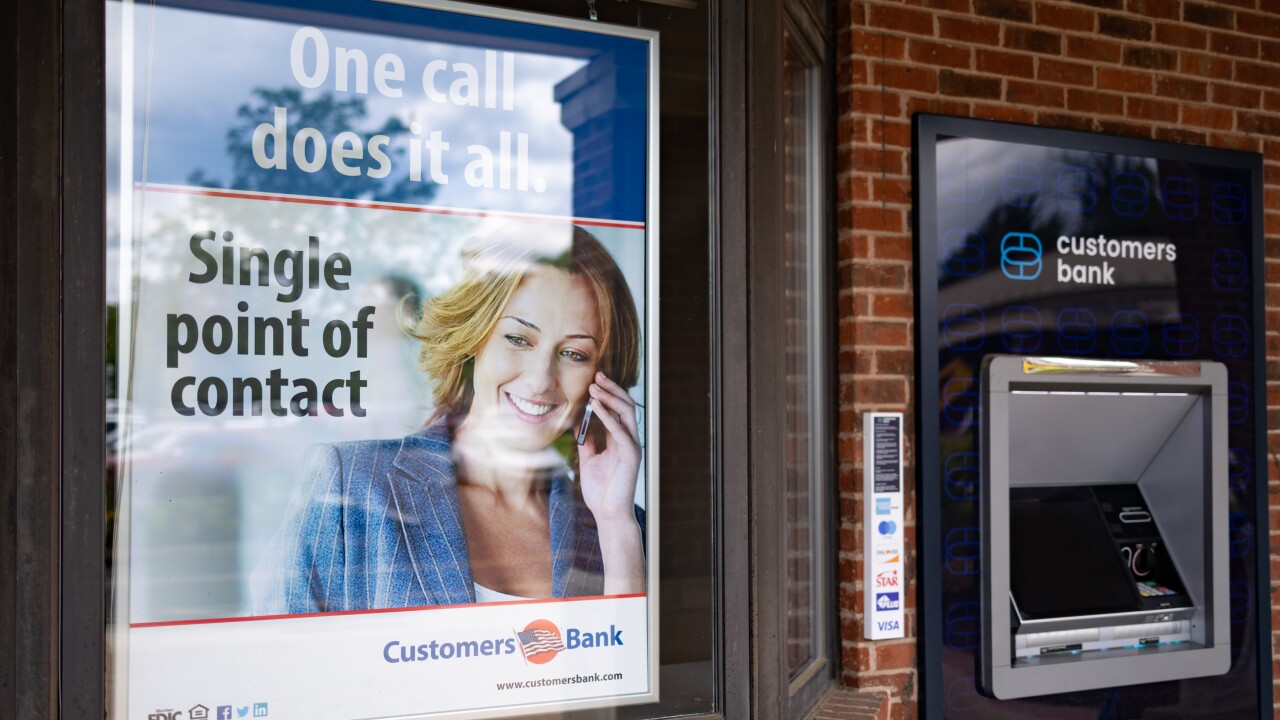-
The best sales folks realize rejection isn't a sign theyre bad at their jobs. It's a sign they are actually out there doing their jobs.
April 2 -
Improving the branch experience could fail to increase foot traffic, but will boost customer satisfaction, loyalty and, ideally, advocacy.
February 5 -
Industry analyst firm Ovum forecasts greater technology investment among retail banks this year.
February 4

Bank customers have become more satisfied with large banks and less frustrated with their fees over the past year, according to the results of a survey released Thursday by J.D. Power and Associates.
Though consumers still view small banks as being more customer friendly, results from the
"While big banks have traditionally had an advantage over smaller banks in terms of convenience of branch locations and technology, their disadvantage was often in the personal service customers desired," Miller says. "Many of the big banks have made great strides in listening to what their customers are asking for: reducing the number of problems customers encounter and, more importantly, improving satisfaction with fees."
To be sure, the six biggest banks still have plenty of work to do since most fell well below median rankings in the study by the Westlake Village, Calif., marketing firm.
Bank of America (BAC) and Wells Fargo (WFC) consistently ranked below the median average in 11 regions of the U.S. based on six measures of customer satisfaction: account information, channel activities, facilities, fees, problem resolution and product offerings.
Overall, the survey found that satisfaction with banks improved dramatically from last year, rising 10 points, to 763 on a 1,000-point scale, from a year ago.
Banks that received the highest scores were the $23 billion-asset Frost Bank, the San Antonio, Tex., unit of Cullen/Frost Bankers (CFR), with a score of 855 in the Texas region; the $5 billion-asset Beneficial Mutual Savings Bank, a subsidiary of Beneficial Mutual Bancorp (BNCL), in Philadelphia, with a score of 839 in the Mid-Atlantic region; and the $2.9 billion-asset Bangor Savings Bank in Maine, with a score of 831 in New England.
In the Southeast, two banks with similar names ranked first and third: First Citizens Bancorp (FCZA) of Columbia, S.C., scored 836 while First Citizens Bancshares (FCNCA) of Raleigh, N.C., had a score of 819.
The largest increase in overall satisfaction came in the big banks' segment, which saw a 16-point rise, to 759. The results were aided by JPMorgan Chase's (JPM) rise to the top spot in the Midwest, with a score of 799.
The survey found satisfaction with midsize banks rose four points, to 785, and climbed just one point at regional banks, to 760.
In the past few years, many banks have eliminated free checking and added new fees, which typically hurt their results. But the study found that about 33% of customers say they "completely" understand their bank's fee structure, up from 26% last year. Fees are still a source of customer complaints, though, with 18% of customers experiencing a problem with fees.
Customers also are embracing mobile banking and slowly reducing transactions at branches. Mobile banking use rose to 17% of all customers, up from 11% last year, and the average number of transactions per customer jumped to 51 per year, up from 29 in last year.
"Successful banks are not pushing customers out of the branch, but rather providing tools that make it easier to conduct their banking business when and where it is convenient for them," says Miller.
J.D. Power surveyed more than 52,000 consumers in January and February of this year. It classified the six biggest financial institutions by deposits as "large banks." Regional banks are defined as those with between $33 billion and $180 billion in deposits, and midsize banks, the smallest institutions considered for the survey, are defined as those with between $2 billion and $33 billion of deposits.





